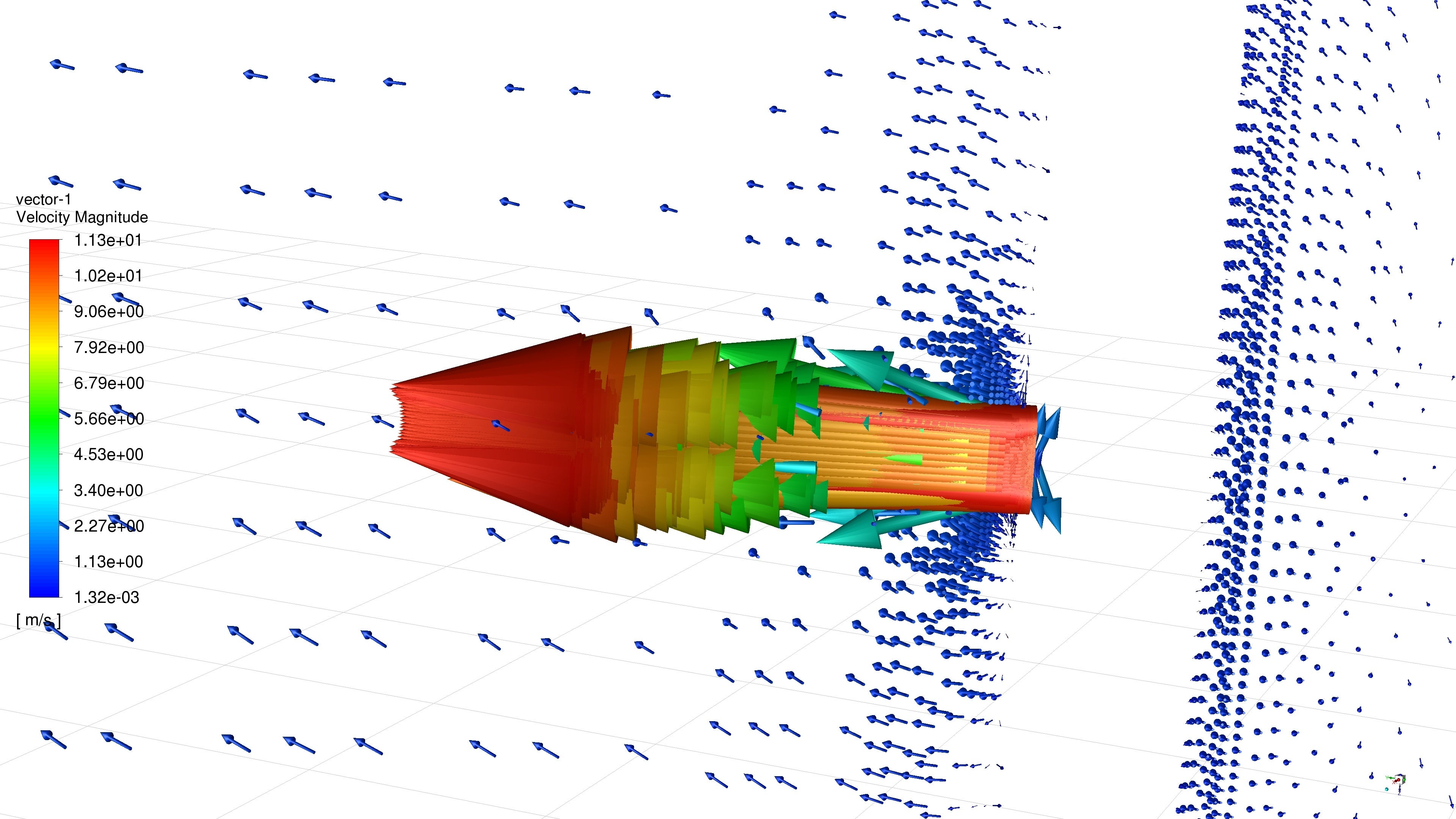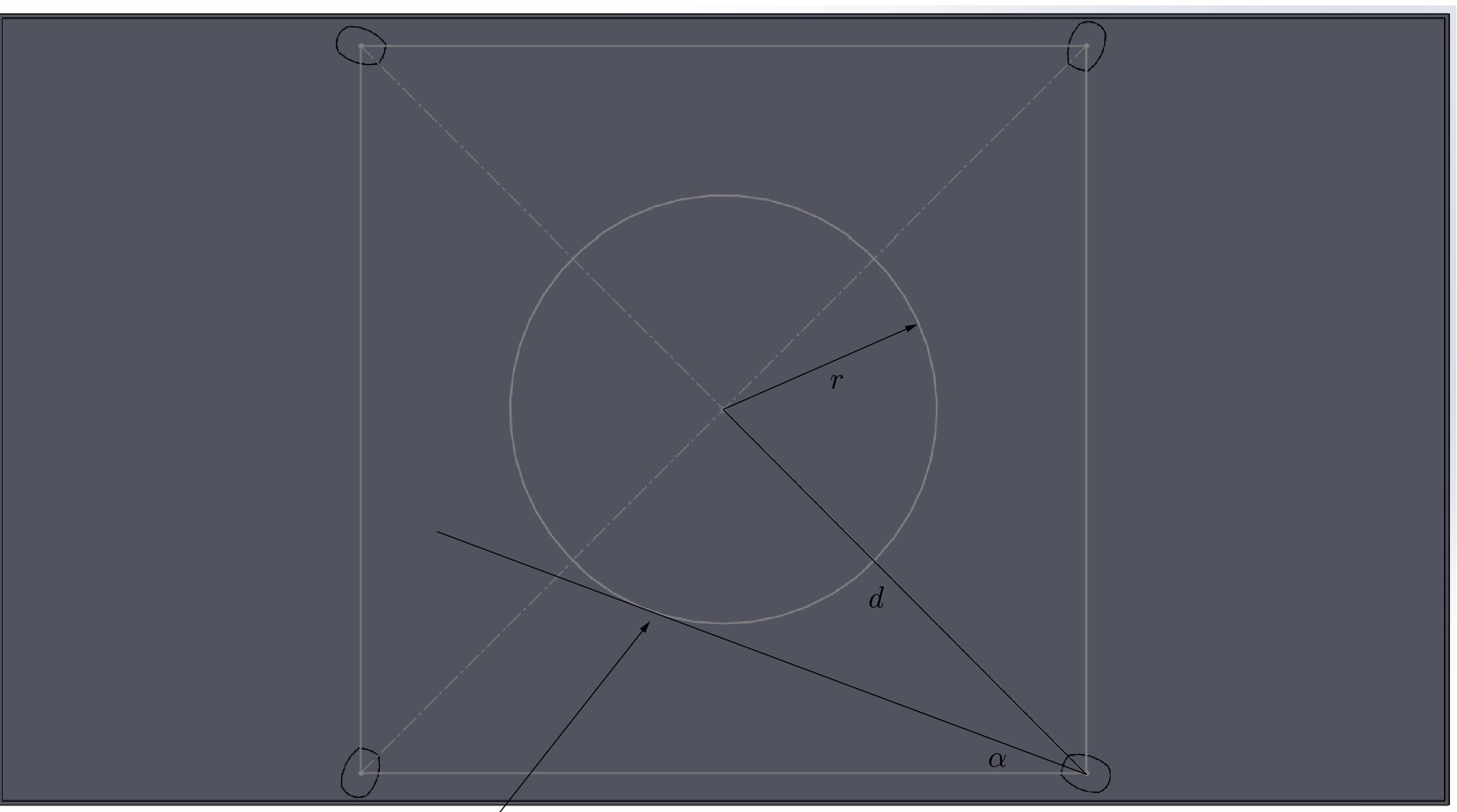-
-
July 14, 2021 at 9:19 am
bugroakold
SubscriberHello,
I'm currently trying to simulate air flow in a pretty big room (3.4m x 1.85m x 4m). The function of this room is to create artifical tornado. It is planned to be achieved by using 4 masts with 6 small inlets each. Inlets are faced towards inner circle as shown in the figure below:
July 14, 2021 at 10:02 amRob
Forum ModeratorGiven the jet is not confined it will slow as it's dissipated in the larger domain. Use vectors on the horizontal plane through the jet to see what's going on and adjust the scale: blue is 0-10m/s so you may find you've lost the resolution. On the pressure outlet use the Radial Equilibrium option. Also, which turbulence model are you using? Read the theory on the different models before you changed anything.
July 14, 2021 at 11:39 ambugroakold
SubscriberI've used vectors and contours

 The velocity around the cente
The velocity around the cente
Also, English is not my native language, so could you please elaborate what do you mean by "jet" and "not confined"? I assume jet = this rectangular hole from which air is blown into the room, but I can't grasp the second term.
I 've actually tried few models rather randomly, now I'm using GEKO turbulence model.
July 14, 2021 at 12:29 pmRob
Forum ModeratorGEKO will need some tuning (and the correct choice of parameters) so avoid for now. Read up on the k-omege and RSM models.
Jet is the fast moving fluid, and "not confined" is because the jet flows into open space. The above is a good start but try plotting on the z-plane. You'll see how the jet behaves then. As you're in Fluent also have a look in the Velocity results section, tangential, radial and axial components will be useful when you come to write up.
Viewing 3 reply threads- The topic ‘Fluent – Air velocity problem / verification’ is closed to new replies.
Innovation SpaceTrending discussions- air flow in and out of computer case
- Varying Bond model parameters to mimic soil particle cohesion/stiction
- Eroded Mass due to Erosion of Soil Particles by Fluids
- I am doing a corona simulation. But particles are not spreading.
- Centrifugal Fan Analysis for Determination of Characteristic Curve
- Issue to compile a UDF in ANSYS Fluent
- Guidance needed for Conjugate Heat Transfer Analysis for a 3s3p Li-ion Battery
- JACOBI Convergence Issue in ANSYS AQWA
- affinity not set
- Resuming SAG Mill Simulation with New Particle Batch in Rocky
Top Contributors-
4337
-
1494
-
1375
-
1197
-
1021
Top Rated Tags© 2025 Copyright ANSYS, Inc. All rights reserved.
Ansys does not support the usage of unauthorized Ansys software. Please visit www.ansys.com to obtain an official distribution.
-
The Ansys Learning Forum is a public forum. You are prohibited from providing (i) information that is confidential to You, your employer, or any third party, (ii) Personal Data or individually identifiable health information, (iii) any information that is U.S. Government Classified, Controlled Unclassified Information, International Traffic in Arms Regulators (ITAR) or Export Administration Regulators (EAR) controlled or otherwise have been determined by the United States Government or by a foreign government to require protection against unauthorized disclosure for reasons of national security, or (iv) topics or information restricted by the People's Republic of China data protection and privacy laws.












